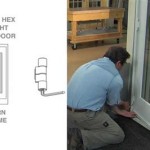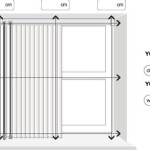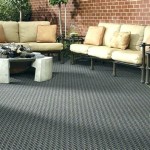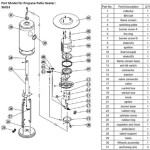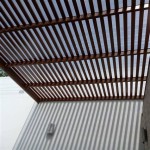Use external sources as references.
Understanding the Anderson 400 Series Patio Door
The Anderson 400 Series patio door represents a significant option in the residential construction and remodeling industry. Known for its blend of aesthetics, durability, and thermal performance, this door system caters to a broad range of architectural styles and homeowner preferences. Understanding the components, features, and installation practices associated with the Anderson 400 Series patio door is crucial for both contractors and homeowners seeking to enhance their properties.
This article provides a comprehensive overview of the Anderson 400 Series patio door, focusing on its key features, material composition, performance characteristics, installation considerations, and maintenance requirements. This information is intended to provide a factual and objective understanding of this popular patio door option.
Key Features and Material Composition
The Anderson 400 Series patio door is characterized by its construction, utilizing a combination of wood and vinyl materials. The core of the door frame and panels is typically made from solid wood, offering structural integrity and a traditional aesthetic. This wood core is then encased in a rigid vinyl exterior, providing resistance to weathering, rot, and insect damage. This construction method aims to combine the natural beauty of wood with the low-maintenance benefits of vinyl.
The glazing used in Anderson 400 Series patio doors is typically a double-pane insulated glass unit (IGU). This IGU is designed to improve thermal performance by reducing heat transfer between the interior and exterior of the home. Optional low-emissivity (Low-E) coatings and argon gas fills can further enhance the energy efficiency of the door system. These features contribute to reduced energy consumption and improved comfort within the home.
Hardware components, such as handles, locks, and rollers, are integral to the functionality and security of the patio door. Anderson offers a range of hardware options for the 400 Series, allowing homeowners to customize the appearance and security level of their doors. The hardware is designed to withstand repeated use and exposure to the elements.
The screen systems for the Anderson 400 Series are designed for smooth operation and durability. These screens help to keep insects out while allowing for ventilation. The screens are typically constructed from fiberglass mesh and are available in various frame colors to match the door's aesthetic.
Performance Characteristics and Energy Efficiency
The Anderson 400 Series patio door is engineered to meet specific performance standards for air leakage, water penetration, and structural integrity. These standards are typically established by industry organizations such as the American Architectural Manufacturers Association (AAMA) and the National Fenestration Rating Council (NFRC). The door's performance ratings are often displayed on a label affixed to the product, providing consumers with information about its energy efficiency and weather resistance.
Air leakage is a critical factor in determining the energy efficiency of a patio door. Excessive air leakage can lead to drafts, increased heating and cooling costs, and reduced comfort. The Anderson 400 Series is designed with features such as tight seals and weather stripping to minimize air infiltration. Lower air leakage ratings indicate better performance.
Water penetration resistance is another important performance characteristic. The patio door must be able to withstand exposure to rain and wind without allowing water to enter the home. Anderson 400 Series patio doors are tested to ensure they meet specific water penetration resistance standards. Proper installation is also crucial for preventing water damage.
Structural integrity refers to the door's ability to withstand wind loads and other external forces. The Anderson 400 Series is designed to meet or exceed relevant structural performance standards, ensuring that it can withstand typical weather conditions. This is particularly important in areas prone to high winds or severe storms.
The U-factor and Solar Heat Gain Coefficient (SHGC) are two key metrics used to evaluate the energy efficiency of windows and doors. The U-factor measures the rate of heat transfer through the door, with lower values indicating better insulation. The SHGC measures the fraction of solar radiation that enters the home through the door, with lower values indicating better resistance to solar heat gain. The Anderson 400 Series offers various glazing options with different U-factors and SHGC values, allowing homeowners to select the option that best suits their climate and energy efficiency goals. According to Anderson's website, the 400 series Patio doors can have U-Factors ranging from 0.22 to 0.30 depending on the glass package chosen. Source: [Anderson Windows](https://www.andersenwindows.com/)
Installation Considerations and Maintenance
Proper installation is critical to the long-term performance and durability of the Anderson 400 Series patio door. It is recommended that the door be installed by a qualified professional who is familiar with the manufacturer's installation instructions and relevant building codes. Incorrect installation can lead to problems such as air and water leakage, difficulty operating the door, and premature failure of components.
Before installing the patio door, it is essential to ensure that the rough opening is properly prepared. The opening should be square, level, and plumb, and it should be sized correctly to accommodate the door frame. The installer should also ensure that the surrounding wall structure is sound and free from any signs of damage or deterioration.
During the installation process, it is important to use appropriate shims and fasteners to secure the door frame in the rough opening. The shims should be placed strategically to ensure that the door is properly aligned and that the frame is not distorted. The fasteners should be of the correct type and size for the application, and they should be installed according to the manufacturer's instructions.
After the door frame is installed, it is necessary to seal the perimeter of the frame to prevent air and water leakage. This can be done using caulk, foam sealant, or a combination of both. The sealant should be applied carefully and evenly to ensure a tight seal. It is also important to install flashing around the exterior of the door to direct water away from the wall structure.
Regular maintenance is essential for keeping the Anderson 400 Series patio door in good working condition. This includes cleaning the glass and frame, lubricating the hardware, and inspecting the weather stripping. The glass should be cleaned with a mild soap and water solution. The frame can be cleaned with a similar solution or with a commercially available vinyl cleaner. The hardware should be lubricated periodically with a silicone-based lubricant. The weather stripping should be inspected for cracks or damage, and it should be replaced as needed. Anderson provides specific care instructions that should be consulted regularly. Source: [Anderson Windows Care and Maintenance](https://www.andersenwindows.com/support/care-maintenance/)
The sliding tracks should be kept free of debris to ensure smooth operation of the door. Vacuuming or sweeping the tracks regularly can help to prevent buildup of dirt and dust. If the door becomes difficult to slide, the tracks can be lubricated with a silicone-based lubricant.
It is also important to inspect the door for any signs of damage or deterioration. This includes checking for cracks in the frame, loose hardware, and damaged weather stripping. Any necessary repairs should be made promptly to prevent further damage. If repairs are beyond the scope of the homeowner, it is recommended to consult with a qualified contractor.
Furthermore, the wood components of the door, while protected by the vinyl cladding, should be periodically inspected for signs of moisture intrusion, particularly at the joints and edges. Any areas where the vinyl cladding is damaged or compromised should be repaired promptly to prevent water from reaching the wood substrate.
Customization Options and Design Considerations
The Anderson 400 Series patio door offers a variety of customization options to suit different architectural styles and homeowner preferences. These options include different frame colors, hardware finishes, glass types, and grille patterns. The availability of these options allows homeowners to create a patio door that complements the overall design of their home.
Frame colors range from standard white and beige to more contemporary colors such as black and dark bronze. Hardware finishes include polished brass, satin nickel, and oil-rubbed bronze. Glass types include clear glass, patterned glass, and tinted glass. Grille patterns include colonial, prairie, and custom designs. These choices enable a tailored aesthetic.
The size and configuration of the patio door can also be customized. The Anderson 400 Series is available in a variety of standard sizes, and custom sizes can be ordered to fit specific openings. The door can be configured as a sliding door, a hinged door, or a folding door, depending on the homeowner's needs and preferences. In many cases, the door's size and orientation should be carefully considered during the design phase to optimize natural light and ventilation.
When selecting a patio door, it is important to consider the overall design of the home and the surrounding landscape. The door should be chosen to complement the architectural style of the home and to provide a seamless transition between the interior and exterior spaces. The placement of the door should also be considered to maximize views and to provide easy access to outdoor living areas.
In addition to aesthetic considerations, it is also important to consider the functional requirements of the patio door. The door should be easy to operate, secure, and energy-efficient. The hardware should be durable and reliable. The glass should provide adequate insulation and protection from the sun's rays.
Finally, homeowners should consider the long-term maintenance requirements of the patio door. The Anderson 400 Series is designed to be low-maintenance, but it still requires regular cleaning and inspection. By following the manufacturer's recommendations for care and maintenance, homeowners can ensure that their patio door will provide years of trouble-free service.

Andersen 71 1 4 In X 79 2 400 Series White Left Hand Frenchwood Gliding Patio Door With Pine Interior And Orb Hardware 9174170

Andersen 71 1 4 In X 79 2 400 Series White Left Hand Frenchwood Gliding Patio Door With Int Blinds And Orb Hardware 9174164 The Home

400 Series Frenchwood Hinged Patio Door Andersen Windows

Andersen 400 Series Frenchwood Patio Door W Finelight Grill

Andersen 400 Series Frenchwood Hinged Patio Door Vinyl Exterior Wood Interior Seaside

Andersen 400 Series Frenchwood Gliding Patio Door Windowrama

400 Series Frenchwood Gliding Patio Door Andersen Windows

Andersen 71 1 4 In X 79 2 400 Series White Right Hand Frenchwood Gliding Patio Door With Pine Interior Frame Kit 9122368 The Home

Andersen 400 Series Patio Doors

Andersen 400 Series Patio Doors Homecraft Inc Wilmington De

